Why can't I make long distance calls on my Panasonic Answering Machine?
- MMatthew Li DDSSep 8, 2025
If you cannot make long distance calls, ensure that you have long distance service.
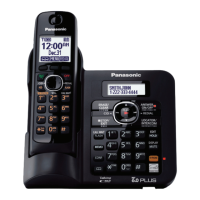
Why can't I make long distance calls on my Panasonic Answering Machine?
If you cannot make long distance calls, ensure that you have long distance service.
What to do if Panasonic KX-TG6645 batteries are fully charged but still flashing?
If you fully charged the batteries but the Panasonic answering machine still flashes, or the operating time seems shorter, try cleaning the battery ends and the charge contacts with a dry cloth and charge again. If the problem persists, it may be time to replace the batteries.
What to do if Panasonic KX-TG6645 does not record new messages?
If your Panasonic answering machine is not recording new messages, it could be due to several reasons: * The answering system might be turned off. Make sure to turn it on. * The message memory could be full. Erase any unnecessary messages. * The recording time may be set to 'Greeting only'. Change this setting. * If you have voice mail service, messages are recorded by your provider, not the answering machine. You may need to adjust the unit's ring settings.
How to fix a Panasonic Answering Machine when I cannot hear a dial tone?
If you cannot hear a dial tone on your Panasonic Answering Machine, make sure the base unit’s AC adapter or telephone line cord is properly connected. Check all connections to ensure they are secure.
What to do if my Panasonic KX-TG6645 does not work?
If your Panasonic answering machine is not working, try the following: * Ensure the batteries are installed correctly. * Fully charge the batteries. * Check all connections. * Unplug the base unit’s AC adapter to reset it, then reconnect and try again. * Register the handset to the base unit if it hasn't been registered.
How to fix noise or sound cutting out on Panasonic KX-TG6645?
Noise or sound cutting in and out on your Panasonic Answering Machine can be due to a few reasons: * Electrical interference: Try repositioning the base unit and using the handset away from sources of interference. * Distance: Move closer to the base unit. * DSL/ADSL interference: If you use a DSL/ADSL service, consider connecting a DSL/ADSL filter between the base unit and the telephone line jack.
What to do if my Panasonic KX-TG6645 handset beeps or flashes?
If your Panasonic Answering Machine handset beeps and/or flashes, it indicates that the battery charge is low. To resolve this, fully charge the batteries.
Why is 'No Service' displayed on my Panasonic KX-TG6645 Answering Machine?
The 'No Service' message appears because the handset is too far from the base unit, the base unit’s AC adaptor is not properly connected, or the handset is not registered to the base unit. To resolve this, move the handset closer to the base unit, ensure the AC adapter is correctly connected to the base unit, or register the handset to the base unit.
Why can't I operate the Panasonic Answering System remotely?
If you cannot operate the answering system remotely, the remote access code might not be set; set the remote access code. You may also be entering the wrong remote access code. Press each key firmly. The answering system might also be turned off; turn it on.
Why I cannot make a call on my Panasonic KX-TG6645 Answering Machine?
If you cannot make a call on your Panasonic Answering Machine, the dialing mode may be set incorrectly; change the setting. Also, the handset may be too far from the base unit; move closer and try again.
| Brand | Panasonic |
|---|---|
| Model | KX-TG6645 |
| Category | Answering Machine |
| Language | English |
Details the different models and their composition.
Lists supplied and replacement accessories for the product.
Overview of optional handset features.
Provides critical safety warnings and precautions for product use.
Details safe operating practices and cleaning instructions.
Advises on potential interference with medical devices.
Cautions regarding installation near electrical storms and wet areas.
Recommends battery types and warns against mixing old/new batteries.
Basic safety precautions to reduce risks of fire, shock, and injury.
Guidance on optimal placement of the base unit for best reception.
Advice on keeping the product away from environmental hazards.
Instructions for cleaning the product's exterior.
Notes on product disposal, transfer, and legal notices.
Technical details and operating conditions of the product.
Instructions for connecting the base unit and charger.
Guidelines for installing rechargeable batteries correctly.
Information on charging the handset batteries.
Important notes regarding connections, battery installation, and charging.
Details battery performance in continuous use and standby.
Explains the eco mode feature for power saving.
Identifies and explains handset buttons and features.
Identifies and explains base unit buttons and features.
Identifies and explains base unit buttons for KX-TG6641 series.
Explains the navigator key functions.
Instructions for attaching and removing the belt clip.
Explains icons and indicators shown on the handset display.
Explains icons and indicators shown on the base unit display.
Guides through initial setup like date, time, and language.
Step-by-step instructions to set the date and time.
How to select the display language for the unit.
How to select the language for voice guidance.
Instructions to change dialing mode (Tone/Pulse).
Step-by-step guide to making calls with the handset.
How to make calls using the speakerphone function.
How to adjust receiver or speaker volume during calls.
How to redial numbers from the stored list.
How to delete numbers from the redial list.
How to make calls using the base unit's speed dial keys.
How to adjust speaker volume on different models.
How to redial numbers from the stored list (KX-TG6641 series).
How to delete numbers from the redial list (KX-TG6641 series).
How to insert a pause for PBX or long-distance calls.
Steps to answer calls using the handset.
How to enable automatic answering by lifting the handset.
How to adjust ringer volume while the handset is ringing.
How to set preferred ringer volume beforehand.
How to temporarily turn off the handset ringer.
How to answer calls using the base unit speakerphone.
How to adjust base unit ringer volume and turn it off.
How to place an outside call on hold.
How to mute the microphone during a conversation.
How to use the flash function for PBX features.
How to use call waiting and caller ID features.
How to temporarily switch to tone dialing.
Improves sound clarity in areas with interference.
Enhances voice clarity for easier conversation.
How to join an existing outside call (conference).
How the unit operates and makes calls during a power outage.
Instructions for making calls during a power failure.
How to answer calls during a power failure.
How to add, store, and use the shared phonebook.
Step-by-step guide to adding contacts to the phonebook.
Table showing character input for names.
How to erase characters or numbers in the phonebook.
How to use groups to organize phonebook entries.
How to rename the phonebook groups.
How to browse all stored phonebook entries.
How to find entries by typing the first letter.
How to find entries by selecting a specific group.
How to edit existing phonebook entries.
How to delete a single entry from the phonebook.
How to delete all entries from the phonebook.
How to dial numbers from the phonebook while on a call.
How to assign phone numbers to speed dial keys.
Step-by-step guide to assigning numbers to speed dial.
How to assign existing phonebook entries to speed dial.
How to edit an existing speed dial entry.
How to delete a speed dial entry.
How to check which numbers are assigned to speed dial keys.
How to make calls using the speed dial keys.
Overview of customizing unit features through menus or codes.
Explains how to navigate programmable settings.
Configuration options for ring count, recording time, remote code.
Settings to turn the answering system on or off.
Accessing voice mail settings.
Accessing intercom settings.
Accessing date and time settings.
Setting the unit's date and time.
Setting up alarm functions for the unit.
Adjusting time settings based on Caller ID or manual input.
Adjusting the ringer volume for the handset.
Selecting different ringer tones for the handset.
Settings for silent mode on the handset.
Settings for announcing caller information.
How to set custom names to handsets.
Feature to block unwanted callers.
Settings related to speed dial functionality.
Settings for accessing and managing voice mail.
Setting the message indicator alert.
Adjusting the display contrast.
Turning key tones on or off.
Settings for editing caller ID numbers automatically.
Turning the auto talk feature on or off.
Settings for telephone line mode and dial mode.
Adjusting the flash time for PBX systems.
Setting the line mode for optimal volume.
Enabling or disabling the call sharing feature.
Options for registering or deregistering handsets.
Settings for power failure operation mode.
How to change the unit's display language.
How to change the voice guidance language.
Explanations for various programming settings and features.
Advanced programming options for the unit.
How to set and manage alarm functions.
How to set the handset to not ring during specified times.
Steps to activate or deactivate the silent mode feature.
How to set the start and end times for silent mode.
How to assign custom names to handsets.
How to reject calls based on stored numbers or no number.
How to add numbers to the call block list.
Adding numbers to call block from the caller list.
Adding numbers to call block by manual entry.
How to block calls with no identifiable phone number.
How to manage numbers in the call block list.
Information on adding new handsets to the system.
Details on adding up to 6 handsets to the base unit.
Steps to pair a handset with the base unit.
How to remove a handset from the base unit.
How to use the Caller ID service features.
Prerequisites for using Caller ID features.
How caller name and number are displayed.
How missed calls are indicated and handled.
Displays stored phonebook names with incoming calls.
Feature that announces caller information.
Announcing phonebook names for incoming calls.
Assigning different ringer tones for caller groups.
How to access and view the list of incoming calls.
How to view the caller list and call back numbers.
How to edit a number in the caller list before dialing.
Automatically edits caller ID numbers based on dialed format.
How to delete specific entries from the caller list.
How to delete all entries from the caller list.
How to save caller information into the phonebook.
Overview of the answering system's functions.
Details on recording capacity and message limits.
How to activate or deactivate the answering system.
How to listen to callers leaving messages.
Options for playing greeting messages to callers.
Steps to record a custom greeting message.
Information on using the unit's built-in greeting messages.
How to revert to pre-recorded greetings.
How to listen to the recorded greeting message.
How to play back messages using the base unit.
Controls for playback, skip, repeat, and erase messages.
How to play back messages using the handset.
Controls for managing the answering system during playback.
How to call back callers whose information is available.
How to delete all recorded messages.
How to record and play voice memos.
Steps to record a voice memo for yourself or others.
How to access and control the answering system remotely.
Setting and managing the remote access code.
Instructions for changing the remote access code.
How to delete the remote access code.
Steps to operate the system remotely via phone.
List of dial commands for remote operation.
How to turn on the answering system remotely.
Configuration options for the answering system.
How to set the number of rings before answering.
Notes for users with voice mail service from their provider.
How to set the maximum message recording time per caller.
How to set the unit to only play greetings, not record messages.
Setting the message indicator alert on the handset.
Explanation of voice mail services from phone providers.
Notes on using voice mail service vs. unit's answering system.
How to store the number needed to access voice mail.
How to delete the stored voice mail access number.
How the unit detects voice mail tones.
How to enable or disable voice mail tone detection.
How the unit indicates and allows listening to voice mail.
How to make intercom calls between handsets and base unit.
Steps to initiate an intercom call.
How to answer an incoming intercom call.
How to page a misplaced handset.
How to transfer calls or set up conference calls.
Procedures for call transfer and conference calls from handset.
Procedures for call transfer and conference calls from base unit.
How to answer a call that has been transferred.
Instructions for mounting the base unit on a wall.
Details on revolving the bracket for wall mounting or desk stand.
How to position the base unit for desk use.
Instructions for mounting the charger on a wall.
Lists common error messages and their causes/solutions.
General troubleshooting steps for common problems.
Troubleshooting for handset not turning on or unit not working.
Troubleshooting issues with display language or handset registration.
Troubleshooting battery charge issues.
Troubleshooting issues with calls, intercom, and ringing.
Troubleshooting issues with Caller ID display and announcements.
Troubleshooting issues with recording messages or remote operation.
How to handle liquid damage to the unit.
Compliance information with FCC rules and regulations.
Information regarding radio frequency exposure limits.
Information on hearing aid compatibility.
Contact information for customer support and assistance.
Information on purchasing parts and accessories.
Details of the limited warranty coverage and terms.
Instructions for sending the product for repair.
Specifies what is covered and excluded by the limited warranty.

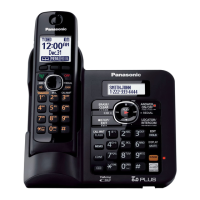
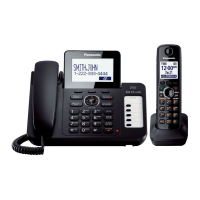
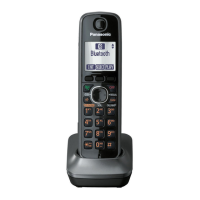

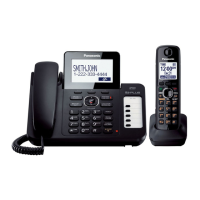
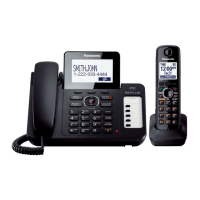

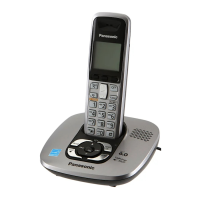
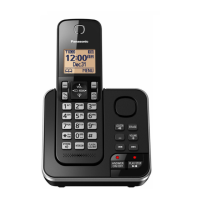
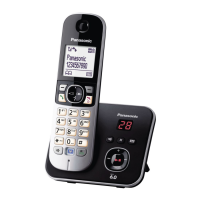

